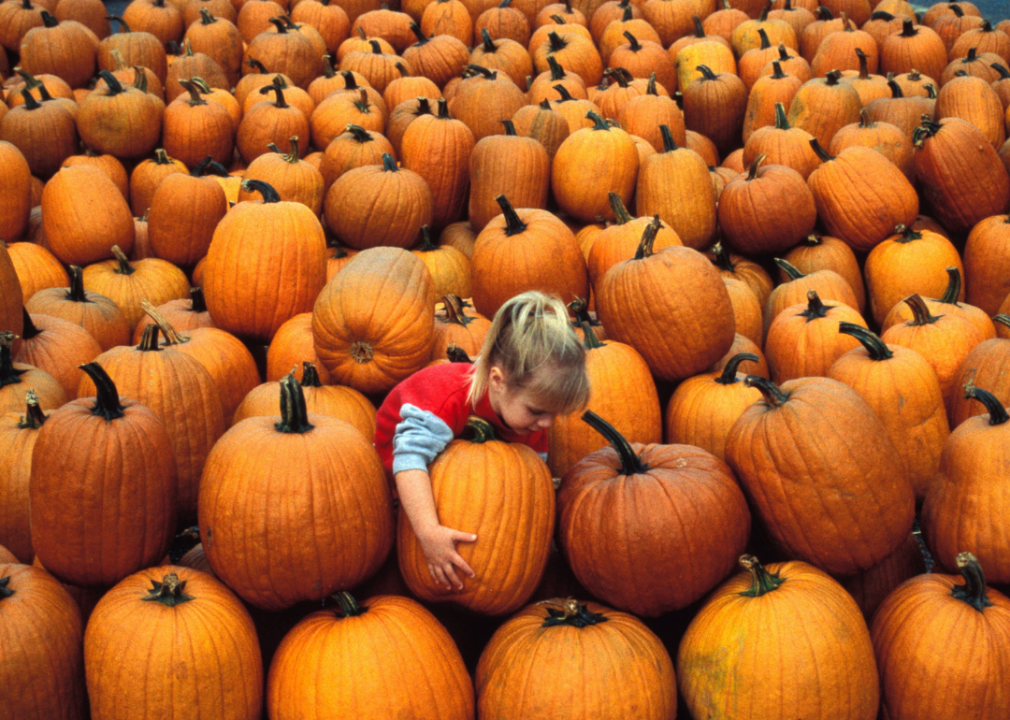Matt Cardy // Getty Images Nowadays, Halloween is a night synonymous with ghouls, gore, and scares–but not very long ago at all, it was a holiday for heart-eyed lovers looking for their spouses. Halloween as we know it today is a conglomeration of a few traditions and festivals, mostly of Irish, Scottish, and English origin. These include the Celtic Samhain, a pagan harvest festival, and its later Christian iteration, All Hallows’ Eve. As immigrants from these areas settled in the U.S. in waves, they brought their religious customs with them, creating a steadily evolving concept of Halloween in America. From the first colonial settlers onwards, commemorations of the holiday blended new and old, European and American, religious and secular. As a result, Halloween used to look quite a bit different in centuries past than it does today. Oct. 31 has gone through eras of being religious, violent, romantic–and sometimes all of those things at once. Stacker put together a list of 15 long-gone Halloween traditions using historical documents, news sources, and academic research. While it might be clear how some of these evolved to become the spooky games we know and love–for instance, turnip lanterns aren’t too far from jack-o’-lanterns, much like how going door-to-door for “soul cakes” isn’t too far removed from trick-or-treating for candy–others might be entirely unrecognizable (it’s probably been more than a few years since someone has wished you a happy “Nut Crack Night.”) Some traditions aren’t as long-held as we might think, either; trick-or-treating became popular in its current form around the 1950s, and receiving specially packaged Halloween candy only became largely popular in the 1970s. Read on to discover what All Hallows’ Eve pastimes were popular in decades past. Throwing apple peels to predict one’s romantic future Sepia Times // Getty Images There’s a reason apples are synonymous with the Halloween season: They have been symbols of immortality and fertility in many cultures for centuries and were used during the Celtic festival Samhain to commemorate the end of the annual harvest. When European settlers first made their way to New England in the early 17th century, they brought these traditions along with them. Each autumn during this period, young single women would throw apple peels over their shoulders; the letter formed by the peel on the floor was supposedly the initial of her future spouse. This practice gradually evolved into the more recognizable apple-centric fun we partake in today, including bobbing for apples. Wreaking violence and vandalism Canva A good-natured prank or two is to be expected on Halloween night, but up until the mid-20th century, vandalism, assault, and violence on Oct. 31 was a real source of harm in cities throughout America. It is possible that this trend had roots in Ireland and Scotland, Lisa Morton, author of “Trick or Treat: A History of Halloween,” told History, but by the late 1800s in America, outhouse-tipping and vegetable-uprooting between neighbors were common practices on Halloween. Things soon got out of hand by the early 1900s; young people in cities gathered in masses to set off pipe bombs, throw bricks through windows, and hound unsuspecting passersby. The solution to this “Halloween problem” grew popular from about the 1930s to the 1950s and led to the wholesome, family-friendly holiday we know today. To keep young people out of trouble, towns across the country started encouraging adults to have sweets at the ready to placate them, giving them the option of satisfying them with treats to avoid their tricks. Building bonfires Dave Etheridge-Barnes // Getty Images Up until the first half of the 20th century, tall, blazing bonfires were part and parcel of celebrating Halloween night. There are a few theories as to how this tradition began, one being that it translated over to the U.S. from the U.K., where Brits have celebrated Guy Fawkes Night on Nov. 5th–also known as Bonfire Night–with towering flames since 1606. It is thought that these infernos played the role of guiding wandering spirits out and about on Halloween toward the afterlife. Perhaps due to safety concerns and general convenience, these giant fires have largely been replaced by candles. Giving out anything but candy to trick-or-treaters American Stock Archive // Getty Images It may seem unimaginable to us now, but receiving candy on Halloween is a relatively new tradition. Until the mid-20th century, children could instead expect to receive fruit, nuts, or even small amounts of money while going door-to-door. This is because earlier Halloween festivities more closely resembled the holiday’s European origins as a harvest festival, centering around seasonal fruits like pumpkins and apples. After trick-or-treating took widespread hold around the 1950s, candy companies began to catch on that there was money to be made and started marketing more aggressively around the holiday. This, paired with fears around the dangers of children receiving unwrapped treats from strangers, made candy the reigning king of Halloween by the 1970s. Making jack-o’-lanterns out of turnips, potatoes, or beets
Forgotten charms: 15 old-school Halloween traditions that are no longer practiced













